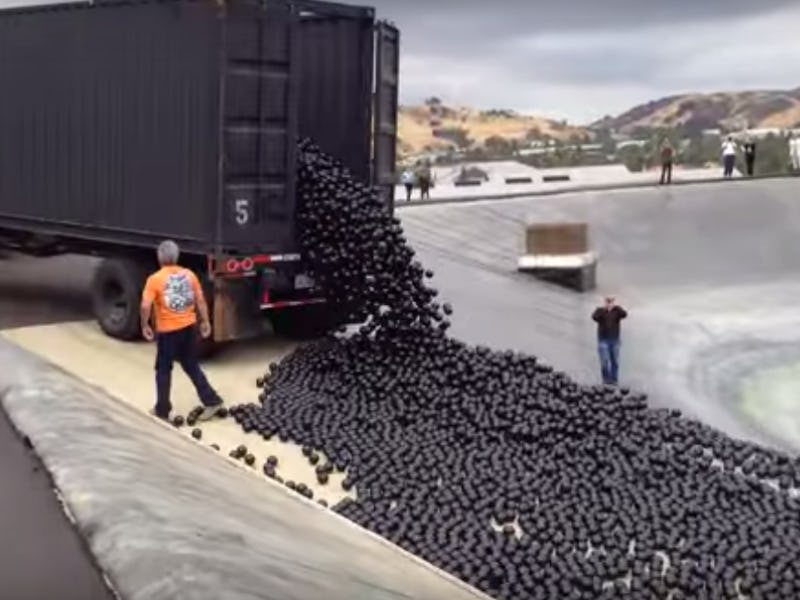Saving L.A.'s Water Reservoir With Millions of Black Plastic Shade Balls
Throwing shade in the best of ways.

Say one thing in favor of the West’s brutal drought: It’s forcing Californians to come up with bold solutions. Some of those ideas are good, some are decidedly less so. Turning the city reservoir into the darkest Chuck E. Cheese ball pit surprisingly falls on the good side.
This week, Los Angeles Mayor Eric Garcetti unleashed 20,000 black plastic “shade-balls” onto the reservoir’s 3.3 billion gallons, the final flourish on a $34 million ballcentric water quality protection plan. Each 36-cent ball works by reducing evaporation and protecting against animals and dirt. Now the 175-acre reservoir is covered with about 96 million of them.
Via email, Marty Adams, one of the city’s water system managers, assured me the balls are completely safe for contact with drinking water, having been made of the same high-density polyethylene that would be used to construct a gallon milk jug.
“They do not emit or leach any chemicals, but eventually do lose structural integrity and may split in half or fail at the seams,” he wrote. “We have previously looked at the effect of the shade balls on temperature both of the water and of the local climate. What we found was there is no effect in either case. It doesn’t warm up the water or the air in any perceptible way.”
Reps at the L.A. Department of Water and Power tell me the balls are black for several reasons. Black is a built-in UV stabilizer; balls of another dye would leach into the water; and black keeps them from interacting with sunlight beneath the water’s surface, cutting down on algae blooms, keeping birds away, and reducing water evaporation. Congratulations, Los Angeles, on adding to history’s greatest innovations in darkness.